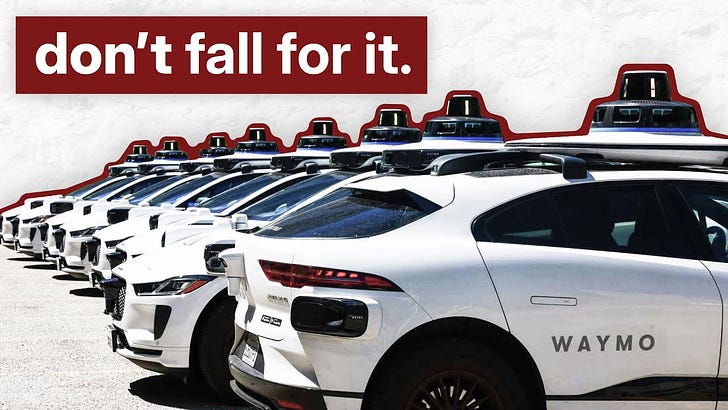New Video: Is the future self-driving?
Self-driving tech offered by Tesla, Waymo, and others are impressive but what problem are they solving? Let's discuss if self-driving technologies will finally fix traffic.
Watch the video:
First San Francisco, then Pheonix, then LA, Atlanta's the next prey for self driving giant Waymo, the most expansive and successful self driving taxi service ran by Google.
Google's not the only company taking up space on the road. Alongside Waymo, you might know about Tesla's "Auto Pilot" technologies, and Elon Musk's army of self-driving and self-destructing Cybertrucks. Many other car companies have similar tech in the works, including, General Motor's Cruise, Ford's Blue Cruise, Mercedes' Drive Pilot, Comma AI, the list goes on and on.
Which begs the question: what will self driving technology do to our cities?
Read the rest of the article on my website:
https://www.nathandaven.com/video/is-the-future-self-driving
Become a member:
Thanks for reading! If you like what I do here, consider joining my Patreon or YouTube Membership. Perks are identical on both, and you’ll get access to exclusive interview content, supporter exclusive updates, and more:





I recently saw one of these going down Boulevard and almost followed it just to see how it would deal with the Boulevard x Edgewood intersection. No algorithm on earth can predict what the hell will happen there.